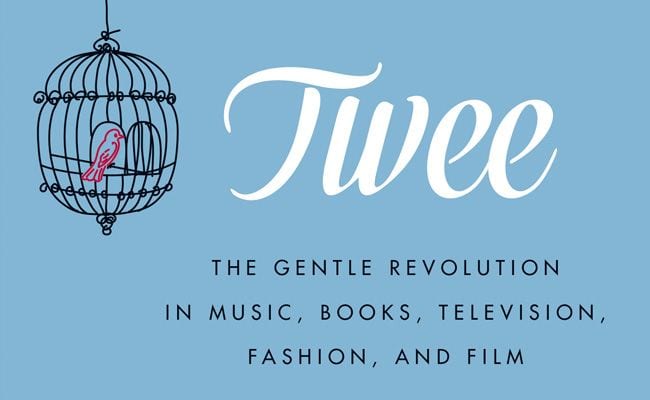
“For me, it was a revelation. There, was revealed a completely different Anne to the child that I had lost. I had no idea of the depths of her thoughts and feelings.”
— Otto Frank on how he felt after first reading Anne Frank’s diary.
I have to confess that I first approached Marc Spitz’s Twee: The Gentle Revolution in Music, Books, Television, Fashion and Film with a cynical smirk. I was prepared to loathe everything about it, because “twee” has become one of those things we are just predetermined to dislike and judge. I was surprised when I realized that not only was it practically impossible to dislike anything about Spitz’s book, but that in fact it was making me hungry, ravenous even, for more twee in my life.
Before getting ahead of ourselves, let us define what twee is. Spitz describes twee as “the most powerful youth movement since Punk and Hip-Hop”, and calls its spiritual birthplace, Brooklyn, as “our greatest export to the world right now, the way ‘Hollywood’ was a half century ago and Silicon Valley was three decades later.”
Essentially, the twee movement and way of thinking concentrates on everything that is good, hopeful and optimistic. Twee works possess “a sharp, almost incapacitating awareness of darkness, death and cruelty, which clashes with a steadfast focus on our essential goodness.” Slowly, the book reveals that twee is something that goes beyond the DIY/Etsy culture, uber hipster “I found this first” thought and anything related to Zooey Deschanel (whom Spitz discusses thoroughly).
In what turns out to be the book’s first ace move, the author decides to prove that twee has in fact been around for the larger part of contemporary historyk by going back all the way to what he determines are its origins; that is, shortly after the end of World War II. This historical dissection would prove dangerous and controversial if not for the fact that the author does a great job of justifying all of his arguments.
Spitz determines that none other than Walt Disney was probably the first twee figure, because his one and only mission as an artist seemed to be “to return laughter to a post World War I America.” Spitz then goes on to literature and examines the effects of J.D Salinger’s seminal The Catcher in the Rye, Sylvia Plath’s The Bell Jar and most surprisingly The Diary of Anne Frank helped define the overall tone for what tee would become. “They are books and they are prescriptions for a kind of temporary cure for pain,” he explains.
By the time Spitz is done with the second chapter, you are convinced that the book’s ideas are neither bubbly nor simple minded. As the book dives deeper into the next decades, Spitz cleverly makes us reexamine movies, books and music we thought we knew well and gives them a twee twist. “The middle-aged Capote was almost a specimen suggesting what a [James] Dean or a Plath or a Holly [Golightly] might have become had they not died so young: a pure and raw-eyed creature battered and simply dragged around too long by life.”
As Spitz explains, twee is obsessed with youth and the romantic notion of an unfinished life, which is why cynics can attribute ageism to the movement, failing to see that the philosophy merely is trying to connect to a moment in everyone’s lives when the world seems completely full of possibility. Spitz’s critical outlook is fascinating, because he seems to make it his mission to give depth and complexity to popular films and music that we often tend to overlook. And the greatest thing about his writing is that he does so without ever suggesting any irony. For example, he writes about John Hughes’ films with passion and compassion, explaining “the beauty of his work was its long overdue exploration of just ‘why’ the binary nature if high school existed, why cool versus uncool was so immovable.”
Depending on which you love more out of the art forms mentioned in the title, Twee will resonate more with you in one of those specific fields. Spitz’s book is indeed a fountain of concise, precise knowledge, and he navigates through all the fields with enough expertise to encourage you to seek out things you don’t know, just because he makes them sound so interesting.
Indeed, I started reading the book thinking I’d be snarky all the way through and ended up listening to Belle & Sebastian albums. As Spitz explains at the beginning “if this book is about anything, it’s about those who seem outwardly callow and frail but are secretly fearless” and after reading it, you will undoubtedly let your twee flag fly high.


![Call for Papers: All Things Reconsidered [MUSIC] May-August 2024](https://www.popmatters.com/wp-content/uploads/2024/04/all-things-reconsidered-call-music-may-2024-720x380.jpg)



